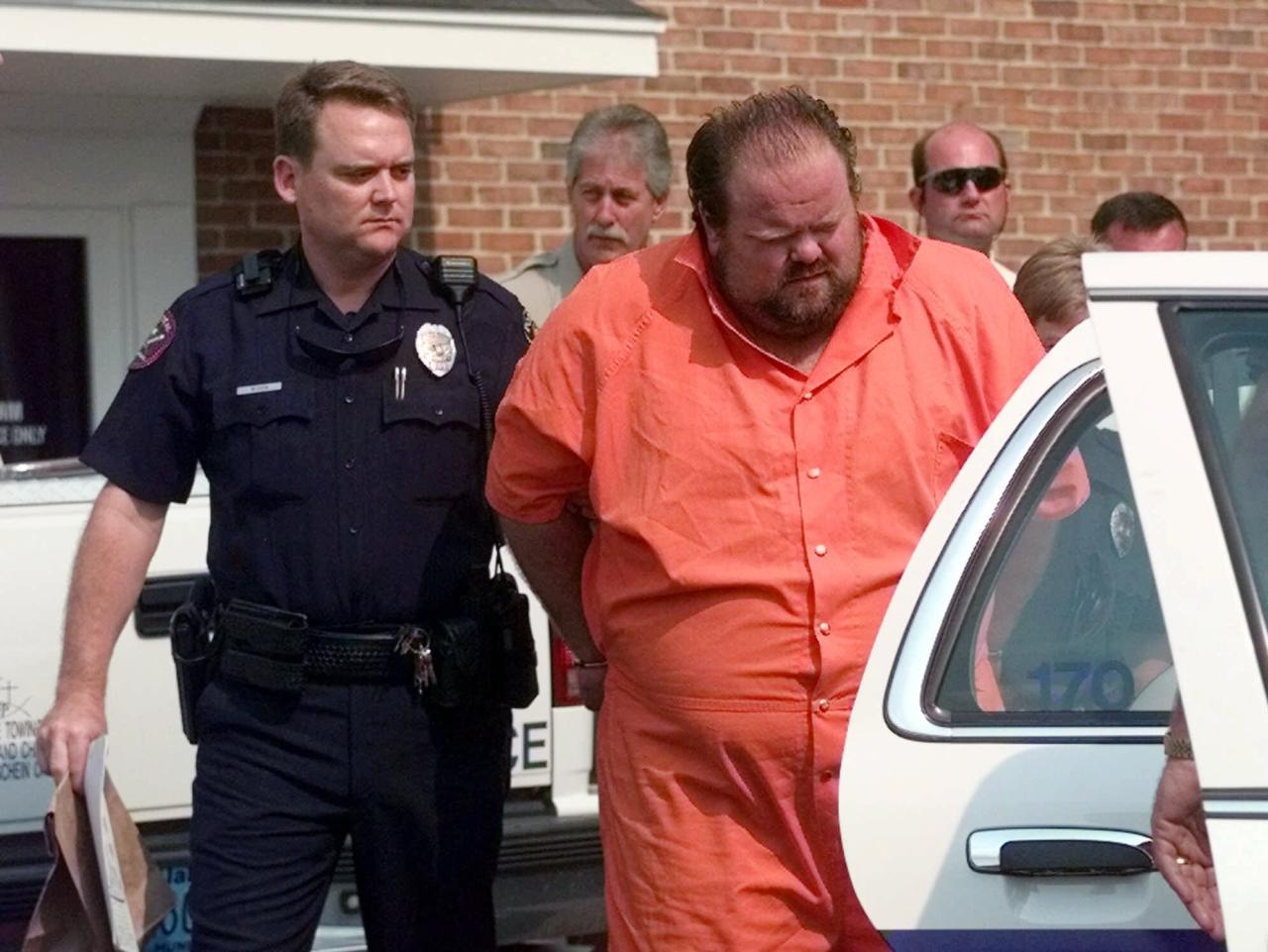Officials escort murder suspect Alan Eugene Miller of Billingsley, Alabama, away from the Pelham City Jail on Thursday, Aug. 5, 1999. Miller has been charged with three counts of capital murder in the slayings of three people at two separate businesses in Pelham, Alabama. (AP Photo/Dave Martin)
Alabama authorities had to halt their attempt to kill a death row inmate Thursday after failing to find a vein which they could use to successfully inject the fatal cocktail.
The state began attempting to kill Alan Miller, 57, about three hours after the U.S. Supreme Court made a divided decision that he could be killed by lethal injection. Miller, who was convicted of three counts of murder in 1999, requested to be killed by nitrogen hypoxia (essentially suffocation) because he’s scared of needles. After the state said they weren’t ready to use the untested method, a federal judge issued a halt in the execution order. The Supreme court reversed it in a 5-4 decision, ruling the state could kill Miller by lethal injection.
Advertisement
But the state called off Miller’s execution shortly before midnight because officials failed to find a vein they could use to kill Miller. According to the Guardian, Alabama Corrections Commissioner John Hamm said simply “accessing the veins was taking a little bit longer than we anticipated”.
It hasn’t been reported what Miller experienced during the botched killing but failed executions are often grisly affairs.
The failed execution is just the latest in a series of high-profile botched executions in Alabama. In August, the longest execution in recorded American history took place when Alabama officials, trying to find an IV line, failed to kill Joe Nathan James Jr for three and a half hours. Maya Foa, the director of Reprieve U.S. which reviewed the execution, called the killing the “ the definition of cruel and unusual punishment.”
In 2018, Alabama’s attempt to kill Doyle Hamm, 61, had to be called off in a similar fashion to Miller’s after they took two and a half hours to find a vein. The execution was described as “gory” as the executioners caused Hamm to bleed so much that it leaked through his clothes and the pad he was sitting on. When it was finally called off Hamm collapsed and afterward, some described the execution attempt as “torture.” Hamm died in 2021 of lymphatic cancer.
Advertisement
“Officials knew it was likely they would subject Alan Miller to the very same long and agonizing procedure as Joe Nathan James and Doyle Lee Hamm and yet they ploughed ahead anyway—adding to the state’s horrific history of botched executions,” Reprieve US said in a statement.
It’s not just Alabama that’s botching their killings. In Arizona earlier this year, the state had to inject the lethal cocktail into Clarence Dixon’s groin because they couldn’t find a vein. Reporters who were at the execution said Dixon appeared to be in pain before his execution. In 2014, the state carried out a botched killing of Joseph Wood that took over two hours to kill the man.
It’s gotten so bad that some death row inmates are beginning to request the firing squad as a method for their deaths. Utah, Oklahoma, Mississippi, and South Carolina have all legalized the archaic method. The last inmate to be killed by the method, Ronnie Lee Gardner, was given the choice of lethal injection or firing squad.
“I like the firing squad,” Gardner told a local paper at the time, according to the New York Times. “It’s so much easier … and there’s no mistakes.”
With files from Gabrielle Caplan
Want the best of VICE News straight to your inbox? Sign up here.
Related posts:
Views: 0
 RSS Feed
RSS Feed















 September 24th, 2022
September 24th, 2022  Awake Goy
Awake Goy 
 Posted in
Posted in  Tags:
Tags: 

















